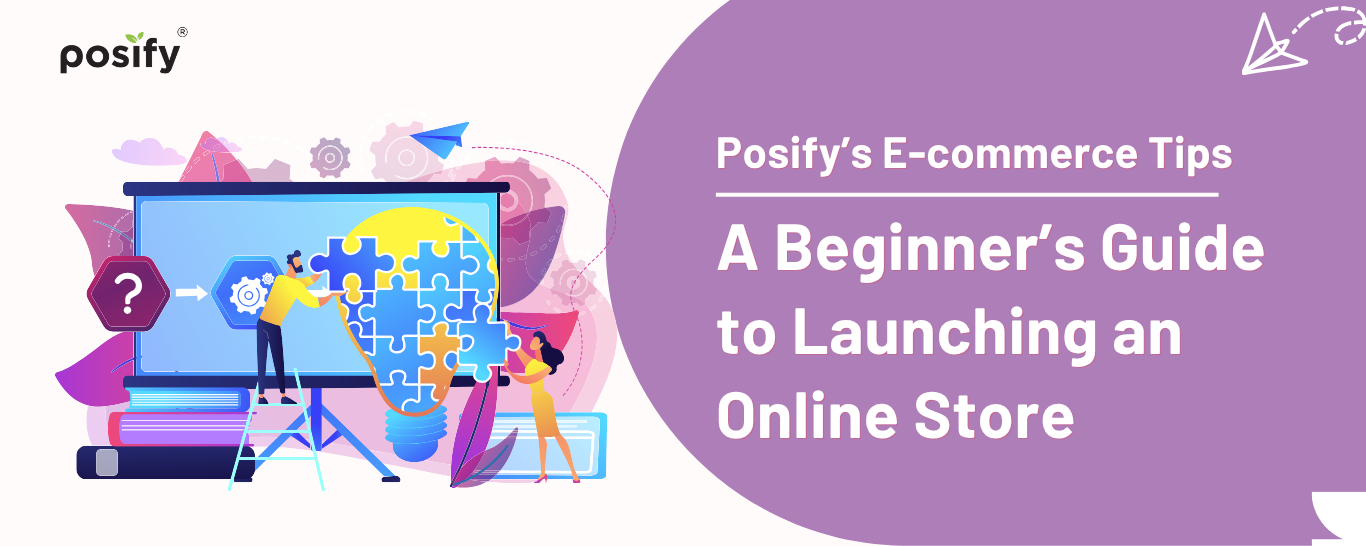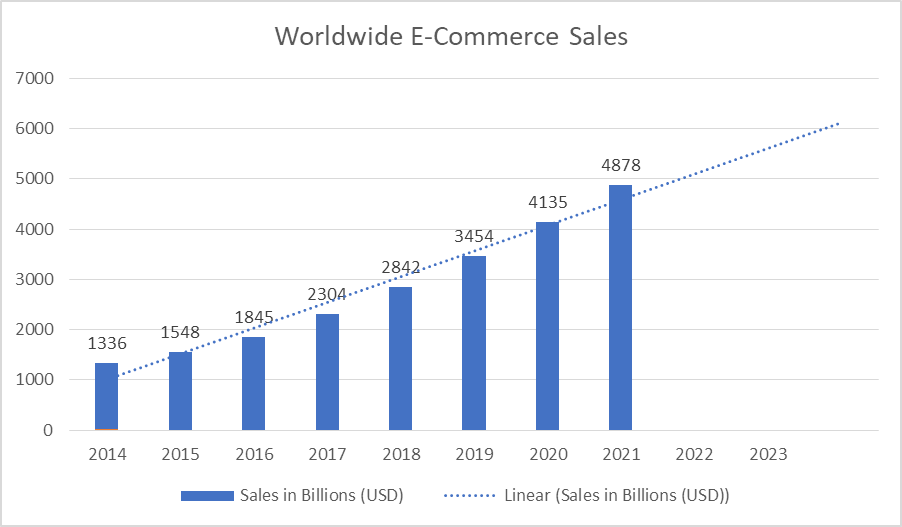What Does It Take to Start an E-commerce Store?

It is no secret that the e-commerce space has been expanding rapidly and will continue to do so for many years to come.

Source: Statista
Statistics from Statista shows that in 2017 retails online sales amounted to 2.3 trillion USD and is expected to grow to 4.9 trillion by 2021 (30% increase year-on-year). This is mainly due to changing consumer behaviors such as the preference of purchasing products from the comfort of the own devices such as mobile phones and tablets.
So what does it take to start an ecommerce shop? Is it difficult? Is it expensive? In this article, let’s look at the cost, skill and time needed to get an online shop started successfully.
1. Starting an E-commerce Shop

Source: Shutterstock
There are many options out there, varying in both the cost and skill needed to start an e-commerce shop. Usually the relationship between skill needed and the cost are linearly dependent. If you want an ecommerce site that is cheap to start, you could try Magento or Woocommerce (a Wordpress ecommerce plugin), but it would require substantial coding skills to get started.
Then there are the easy-to-start ecommerce shop that would require some cost to it, usually in the terms of monthly subscription such as Shopify. The cost will even balloon up the more functionality that you require. So one question to ask before using a pay-to-use ecommerce solution is to first find out all the functionality you would need, and then finding the cost.
Fortunately there are solutions out there that does not require much payment or coding knowledge, such as PosifyStarter. With the ability to list up to 50 products and 30 over shop themes to use, setting up an online shop is easy and requires no cost.
Cost: 0 Dollars
Technical Skill: Minimal
Time: 1 hour
2. Setting up an Online Payment Gateway

Source: Shutterstock
There are many payment gateway options out there such as Paypal, Mastercard, Visa and Stripe. In terms of security, most payment gateways are properly secure, which means the only vulnerability you would need to consider is whether your website is SSL secured.
Another thing to consider would be the commission that these payment gateways take for each purchase made. These payment gateways have commissions ranging from 4% to 12% of the total sale. They may also have rules about how often you can cash out your revenue, so do read up on the terms and conditions.
Once you have chosen a payment gateway, it is as easy as putting in your API keys into your ecommerce system and the given script by the payment gateway. If you use PosifyStarter, all you need is the API key, no coding needed at all!
Cost: % of your Total Sales
Technical Skill: Low
Time: 1 hour
3. Managing Your Delivery

Source: Shutterstock
Now comes the tedious part, which is delivering the items that were purchased. This is a highly contentious part because on the surface it looks easy. Get an order, pack the order and send it out. The tough part comes when managing the cost of delivery especially for overseas delivery. Not to mention the higher the weight the higher the cost of delivery.
Make sure that you understand how to calculate delivery cost by distance, weight and product category. When it comes to overseas delivery, check to see if your item is able to go through customs without much trouble. To recuperate the cost of delivery, you can include it in the costing on your ecommerce store. Based on the customer’s location and item chosen, the delivery cost should be calculated and included in the final charges.
Problems also arise when large volumes of orders starts to flow in, increasing the chances of making the wrong delivery or not being able to deliver at all. Troubles you may face with delivery are such as:
- communicating carrier cutoffs
- Not enough delivery people
- Running out of packing materials
- Not validating delivery address
Having an integrated delivery system to manage orders to not only let you know the current status of orders but also able to give you a forecast of incoming delivery expectation goes a long way in keeping your delivery running smoothly. PosifyStarter has a great integrated delivery management system that is free and easy to use. Just list your delivery costing and it will automatically add it to the item when it is being checked out by the customer.
Cost: 0
Technical Skill: Moderate
Time: 1 hour
4. Start Planning Your Digital Marketing

Source: Shutterstock
Just like a brick-and-mortar shop, you definitely need to spend effort getting the word out about your online store. If you don’t do that, how are customers supposed to know about your online store? Especially since there are probably millions of other online stores competing for the same clientele base.
There are 2 common methods of gaining visibility for your store, again with a linear correlation between effort and cost. These 2 methods are:
4a. Organic Search Visibility (also refered to Search Engine Optimization – SEO)
4b. Paid Per Click Ads (Search Engine Marketing – SEM)
4a. Organic Search Visibility (SEO)
SEO refers to the ability of a website to ORGANICALLY appear high in the list of search results when a user uses a search engine such as Google, Bing and others. In a nutshell, search engines gives websites a SEO score, and based on that score will recommended sites that have higher score for a keyword. There are a few attributes that contributes to that score, such as:
- Site Relevancy (keywords used in the site)
- Meta Tag (has required syntax such as title tags, meta description etc)
- Site Security (is it SSL certified?)
- Page Loading Speed
- Number of Backlinks (do other people refer to the site?)
- Content Age (are the contents constantly updated?)
Hence having an e-commerce site that allows you to touch on this attributes can help you get a good SEO score. However, this may take a while to get to a score that gets you your returns.
Cost: 0 Dollars
Technical Skill: Moderate
Time: +3 months
4b. Paid Per Click Ads (SEM)
This is a paid option which you probably see when you do a Google Search. Usually on the top of the searches you will see ads, which are basically vendors paying for the opportunity to be listed first when a keyword is typed. Not much effort is needed for this, and sometimes the returns can be immediate. However without proper planning and researching, you could end up wasting money on clicks which would never lead to a sale.
Cost: HKD 3,000-200,000 /month
Technical Skill: Low
Time: within 1 days
To improve your SEM results, you would need to have analytical tools to help you see whether clicks lead to an actual purchase. Google provides Google Analytics and Facebook provides Facebook Pixel, but putting the script into your ecommerce shop might be a pain. However there are solutions that makes it easy to integrate Facebook Pixel and Google Analytics. PosifyStarter provides a copy and paste method to get you started on integrating with various analytical tool, so that your ads do not go to waste. If you think it’s complicated, you can ask for the Google Ads Management Services from Posify.
If you would like to know more about how Posify can help your online business get started successfully, do get in touch with us at enquiry@posify.me or visit www.posify.me/hk/posifystarter
Disclaimer
The information contained in this blog is for general information purposes only. We are not responsible for any consequences caused.





